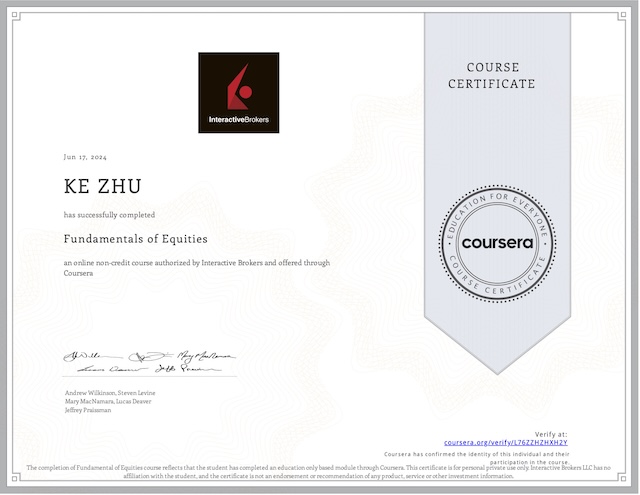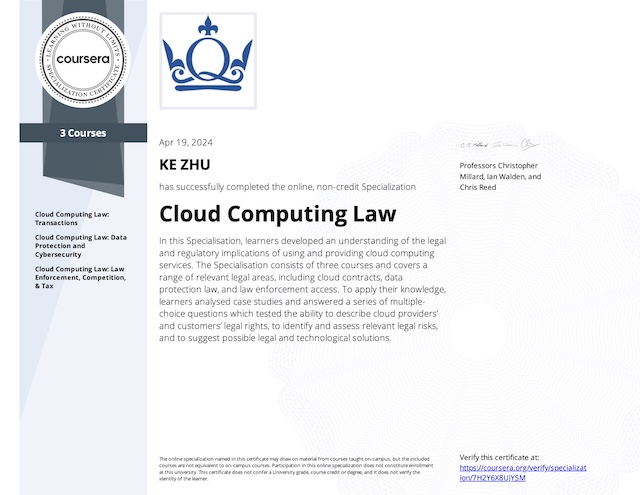Regular Income Tax Liability
The regular tax liability calculation itself is very straightforward:
Tax liability
= Tax base × Tax rateThe complexity of corporate income tax thus stems from the rules and regulations that shape and define the tax base, i.e. corporate taxable income. For tax years beginning after 2017, the Tax Cuts and Jobs Act reduced the corporate tax rate to a flat 21 percent.
Corporate Income Tax Formulas
Comparing the individual and corporate income tax formulas, it is easy to see that the overall structure of the two formulas is quite similar. Both start with the all-inclusive concept of income, then apply deductions to arrive at taxable income, which is then used to determine tax liability. Next tax credits and prepayments are applied to compute the net amount due or refunded.
Income
- Exclusions
= Gross income
- Deductions except for NOL and DRD
= Taxable income before NOL and DRD
- Net operating loss deduction (NOL)
- Dividends received deduction (DRD)
= Taxable income
× Tax rate
= Tax on taxable income
- Tax credit
= Tax due or refundThere are more differences that are not obvious from comparing the tax formulas:
| Accounting periods and methods | Frame measurement of taxable income Define when and how income and deductions are recognized Corporate: calendar year or fiscal year, accrual method Individual: calendar year, cash method |
| Charitable contributions | Corporate: 10% taxable income limit, deduct according to accounting method Individual: 60% AGI limit for cash, 30% AGI limit for non-cash property, deduct when paid |
| Property transactions | General gains and losses from property transactions for individuals and corporations are taxed in the same manner. |
| Capital losses | Corporations cannot use capital losses to offset ordinary income. However, they can carry capital losses back three years and forward five years to offset capital gains in those years. Individuals can deduct up to $3,000 of net capital losses against ordinary income with any excess losses carrying forward indefinitely. |
| Net operating losses (NOLs) | Corporations and individuals can generally carry a net operating loss (NOL) forward indefinitely to offset taxable income in those years, limited to 80% of taxable income. |
| Tax rates | Ordinary tax rates Individual: 10% ~ 37% Corporations: 21% Capital gains tax rates Individual 0%, 15%, 20%, 25%, 28%, net investment income 3.8% Corporations: no preferential |
| Tax credits | Some individual tax credits available to corporations, while other are not. |
Special Corporate Deductions
There are two deductions available only to corporations: the dividends received deduction (DRD) and the organizational expenditures deduction.
Dividends Received Deduction
Like individuals, corporations pay tax on the dividends they receive from other corporations (often, at higher ordinary income tax rates). Without special rules, the situation is costly because it subjects corporate income to three or more levels of taxation.
Pre-tax income
↓
Corporation A → Tax
↓
↓ Dividends
↓
Corporation B → Tax
↓
↓ Dividends
↓
Individuals → TaxThe dividends received deduction (DRD) aims to mitigate such multi-level taxation by making only some or none of the dividend income received by a corporation subject to tax. The amount of the DRD depends on:
- the domestic corporation making the dividend distribution
- the percentage of ownership the dividend receiving corporation holds
| % of ownership the dividend receiving corporation holds | DRD (after 2017) | DRD (before 2018) |
| Less than 20% | 50% | 70% |
| At least 20% but less than 80% | 65% | 80% |
| 80% or more | 100% | 100% |
In many cases, the DRD cannot exceed a special taxable income limitation, which is defined as
DRD percentage × Taxable income before NOL and DRD and capital loss carrybacksThis taxable income limitation does not apply however if a corporation has a current year net operating loss (NOL) after deducting the full DRD, that is negative taxable income). Also note that no DRD is permitted unless the corporation has held the stock for more than 45 days.
Example
CorpA, in current tax year (post-2017), receives $450,000 in dividends from a 70% ownership interest in a U.S. corporation it has held for 6 years. It assumes $170,000 of §162 expenses. CorpA forecasts 3 levels of gross income, what is the DRD in each scenario?
| Scenario 1 | Scenario 2 | Scenario 3 | |
| Projected gross income | $10,000 | $165,000 | $200,000 |
| Dividends received | $450,000 | $450,000 | $450,000 |
| DRD percentage §243(a) | 65% | 65% | 65% |
| DRD | $292,500 | $292,500 | $292,500 |
| Taxable income | $(10,000 + 450,000 – 170,000) = $290,000 | $(165,000 + 450,000 – 170,000) = $445,000 | $(200,000 + 450,000 – 170,000) = $480,000 |
| NOL? | $290,000 – $292,500 = -$2,500 Negative taxable income! NOL! | $445,000 – $292,500 = $152,500 No NOL. | $480,000 – $292,500 = $187,500 No NOL. |
| DRD taxable income limitation | $290,000 × 65% = $188,500 Taxable income limitation does not apply, because of the negative taxable income! | $445,000 × 65% = $289,250 This limitation applies. | $480,000 × 65% = $312,500 This limitation applies. |
| DRD allowed | $292,500 (equals DRD, no limitation) | $289,250 (equals limitation) | $292,500 (equals DRD, since limitation is larger) |
Organizational Expenditures Deduction
Organizational expenses are incurred in connection with the initial organization of a corporation. They include the costs of:
- Legal services for establishing the articles of incorporation and bylaws
- Accounting services
- Expenses of temporary directors and organizational meetings
- Fees paid to the state of incorporation
However they do not include costs of:
- Issuing or selling shares of stock
- Transferring assets to a corporation
Organizational expenses are also distinct from start-up expenses under §195, which also include business investigation costs, such as market surveys and operating expenses like payroll, incurred before a business officially opens its doors.
You may recall that code section 162(a) states:
There shall be allowed as deduction all the ordinary and necessary expenses paid or incurred during the taxable year carrying on a trade or business….
However there is no business yet being carried on in the organizational phase. As a result, capitalization rather than deduction of these expenditures makes conceptual sense. To solve this problem, Congress enacted Section 248 to permits a corporation to
- Elect to immediately deduct the first $5,000 of organizational expenditures
- However, the $5,000 immediate deduction phases out dollar for dollar, when total organizational expenditure costs exceed $50,000.
- Any overage is amortized over the 180-month period beginning with the month in which the corporation begins business.
To qualify, expenses must be incurred before the end of the tax year in which the corporation begins business. By default, the election is assumed, however a corporation can forego the deemed election by capitalizing all organizational expenditures, and deducting them upon corporate liquidation or termination.
Example:
CorpB, an accrual basis corporation, was formed and began business on May 1st. It incurred the following expenses during the year:
| Is deductible under §248? | ||
| Legal fees for drafting Articles of Incorporation and Bylaws | $22,000 | Yes |
| Accounting fees for financial reporting and tax consultations | $15,000 | Yes |
| Expenses for organizational meetings with temporary directors | $10,000 | Yes |
| Fees paid to the state of incorporation | $750 | Yes |
| Expenses for printing stock certificates | $4,000 | No |
Recall that expenditures related to issuing or selling shares of stock are not deductible as organizational expenditures. So the allowable deduction is $47,750 in total.
- Provided the total allowable deduction does not exceed $50,000, Section 248 allows a corporation to:
- Immediately deduct up to $5,000 of organizational expenses
- With any overage (over the $5,000), amortize them over the 180 months, beginning in the month in which the corporation begins business
- If total expenses exceed $50,000, then the $5,000 immediate expense amount phases out dollar for dollar.
Deductible organization expenditures $47,750
Immediate deduction -$ 5,000
Amount to amortize $42,750
Months to amortize 180
Amortization per month $ 237.50
Applicable months 8
Total amortization $ 1,900
Total organizational expenditure deduction
= Immediate deduction + Amortization
= $5,000 + $1,900
= $6,900 Assume the same set of facts, except the Legal fees for drafting Articles of Incorporation and Bylaws increase to $27,250, now the allowable deduction increases to $53,000 in total, which invokes the phase out for the immediate expense amount.
Immediate deduction
= $5,000 - ($53,000 - $50,000)
= $2,000 We now proceed as we did previously:
Deductible organization expenditures $53,000
Immediate deduction -$ 2,000
Amount to amortize $51,000
Months to amortize 180
Amortization per month $ 283.33
Applicable months 8
Total amortization $ 2,267
Total organizational expenditure deduction
= Immediate deduction + Amortization
= $2,000 + $2,267
= $4,267Corporate Alternative Minimum Tax
Note that the corporate Alternative Minimum Tax or AMT has been repealed. Congress created AMT to ensure that no taxpayer with substantial economic income could avoid significant tax liability by using exclusions, deductions, and credits. AMT acted as a safeguard to ensure that taxpayers pay their fair share. However the AMT was both cumbersome and complicated.
From a conceptual standpoint, AMT is a completely separate and distinct tax system that ran parallel to the regular tax system. The AMT system operated by limiting or eliminating certain tax deductions, credits, and other preference items. Most corporations were required to calculate tax liability under both systems and then pay the higher of the two.
There are steps in computing AMT:
- Determine AMT income, which was essentially regular taxable income with numerous adjustments.
- Reduce AMT income by an exemption amount, which began at $40,000 and phased out as AMTI increased.
- Multiply corporate AMT tax rate 20%, i.e.
(AMTI - exemption) × 20%. The result was referred to as Tentative Minimum Tax (TMT). - AMT was the amount by which the TMT exceeded the corporation’s regular tax, i.e.
AMT = TMT - Regular
Small corporations were exempted from AMT. The AMT was criticized for:
- failing to advance any legitimate policy objectives
- raising insufficient revenue
- reducing the value of investment that Congress intended to encourage
- imposing hefty compliance costs
Penalty Taxes
The regular corporate income tax is augmented by two special penalty taxes imposed on corporations to restrict the accumulation of income inside the firm. The purpose is to prevent corporations and their shareholders from circumventing the double taxation of dividends and the steeply progressive marginal tax rates.
Beginning in 2018, under the tax cuts and jobs act, the importance of this prevention has been re-established by the enactment of a flat 21% corporate tax rate and 37% marginal tax rate for the highest income individuals, because a high income individual now has a 16% incentive to shift personal income to the corporate form.
| Accumulated earnings tax | Targets corporations accumulating profits beyond “reasonable” business needs. Most corporations allowed a $250,000 minimum credit. 20% penalty tax on current year earnings accumulated without a reasonable business need. |
| Personal holding company tax | Prevents taxpayers from avoiding higher individual tax rates by using 1. “incorporated pocketbooks” – wealthy individuals transferred investments to a corporation in exchange for its stock. The individuals could then enjoy lower corporate tax rates and the dividends received deduction. 2. “incorporated talents” – highly compensated individuals would form a wholly owned corporation and agree to work for the corporation at a small salary. The corporation would then contract out the services of its owner employee for a large sum with the majority of the income taxed at lower corporate rates. 3. “incorporated properties” – similar to the other two but involves investment property and lease back agreements. 20% penalty tax rate on current year undistributed income of a “personal holding company” |
Related Corporations
Businesses often conduct activities within multiple distinct entities for a variety of reasons. Taxation of multiple corporations under common shareholders control is complex. The related corporations are subject to special tax rules, otherwise shareholders could allocate corporate income across two or more entities to take advantage of lower marginal tax rates and other benefits.
Controlled group of corporations is when two or more corporations are owned either directly or indirectly, by the same shareholder or group of shareholders. Controlled groups fall into three categories:
- Parent-subsidiary controlled group – when one corporation owns at least 80% of the voting power OR stock value of another corporation on the last day of the tax year.
- Brother-sister controlled group
- Combined controlled group
Affiliated group is similar but not identical, it exists when one corporation owns at least 80% of the voting power AND at least 80% of the stock value of another corporation. Affiliated groups can elect to file a single consolidated income tax return.
Book-Tax Difference
To determine taxable income, many corporations begin with income computed under Generally Accepted Accounting Principles (GAAP), that is financial reporting or book purposes. And then make adjustments for book-tax reporting differences. Financial reporting focuses on informing stakeholders, while tax reporting aims to raise revenue for the government.
Each book-tax difference can be unfavorable or favorable from the taxpayer’s perspective:
- Favorable: decrease book income to compute taxable income
- Unfavorable: increase book income to compute taxable income
Book-tax differences are also categorized as permanent or temporary:
- Permanent: differences arise in one year and never reverse
- Temporary: differences arise in one year and later reverse
Let’s now examine some of the many possible book-tax differences
| Federal income tax expense | Deducted for book income, but NOT taxable income Permanent Unfavorable |
| Municipal bond interest | Included in book income, but NOT taxable income Permanent Favorable |
| Meals and entertainment expense | Only 50% deductible for tax Permanent |
| Fines and penalties | Non-deductible for tax Permanent |
| Depreciation expense | Taxpayers use the Modified Accelerated Cost Recovery System to depreciate fixed assets in a standardized manner. Different methods or assumptions are often made for financial reporting purposes. In a given year, the book and tax depreciation expense can differ. But over the life of the asset, these methods often catch up with one another by eventually depreciating the asset in full, making any annual differences temporary in nature. |
My Certificate
For more on Corporate Income Taxation, please refer to the wonderful course here https://www.coursera.org/learn/taxation-business-entities-part-1
Related Quick Recap
I am Kesler Zhu, thank you for visiting my website. Check out more course reviews at https://KZHU.ai



